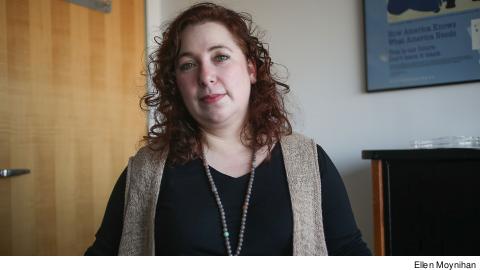Data collection as a campus organizing tool
 |
Queens College anthropology department chair Mandana Limbert described how her fellow chairs were confused last spring when the administration listed how many full-time faculty lines would become available. “The list didn’t match what we expected,” she said. “It started a conversation.”
The discovery led the department chairs to come together with the purpose of determining how many full-time faculty lines had been lost in each department, and the number-crunching began. After a year of research, the PSC chapter estimates that nearly 56 full-time faculty lines have been lost in the last five years and have either not been replaced or replaced with part-time instruction – although the administration believes the number is closer to 40. “My own department, we’re slated to be down 10 lines,” said sociology chair Dana Weinberg. “CUNY runs pretty lean on campuses, but now we’re down to starvation rations.”
FEWER RESOURCES
The effort by the chapter is simple: If department chairs can research how many full-time lines have been lost in their departments, the chapter can compile the data and present it to the administration in order to talk openly and frankly about how departments operate. “The data raise a number of questions about the direction of the college’s allocation of resources,” Limbert said. “How are we going to fix it? Or are these the numbers the college thinks are tenable?”
And, as Richard Maxwell, the media studies chair, said of the data collection, “We are pursuing an ongoing conversation with the administration about the big picture.”
For many in the chapter, the process brought department chairs closer together and built a collective sense of solidarity. “There was a feeling of being alone, that ‘my department was the only one losing lines,’” said Weinberg. “The numbers are validating. It makes you realize you’re not alone, and it forces a discussion about the tough choices that are coming our way.”
AFFECTED DEPARTMENTS
According to statistics compiled by the Queens College PSC chapter, the most adversely affected departments other than sociology are English, down seven lines, and chemistry/biochemistry, history and philosophy, down four lines each. The chart the department chairs created shows in detail how the lines were lost over the last five years. For example, in economics, the department lost three full-timers to retirement, one to another institution and two to a failure of reappointment. The department replaced only three of those lines, for a net loss of three.
AN ORGANIZING MODEL
“You cannot sustain a university in that capacity,” said PSC Queens College chapter chair David Gerwin.
Department chairs are still digging into this research and looking for more detail. For example, Limbert said, the chapter wants to look at the full-time lines that have been restored and find out how many have been on professorial lines.
The union believes the data collection on the part of the department chairs at the college is a model that could be used at other campuses to evaluate what’s going on with full-time faculty lines and how the chapter can talk to administration.
At Queens College, the chapter believes that a loss of full-time lines is a loss for students. As associate professor of media studies Amy Herzog said of the research, “I hope it leads to a recognition [by the administration] that our resources need to be devoted to our students.”

